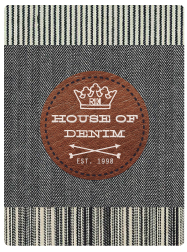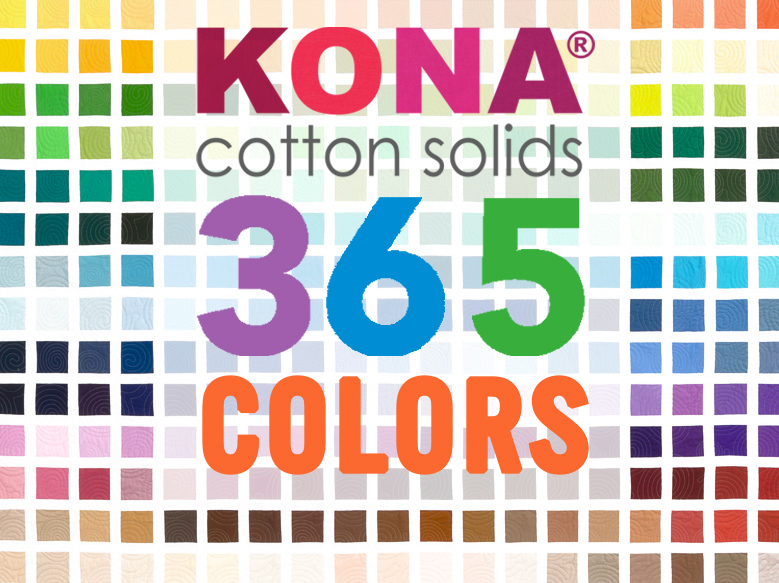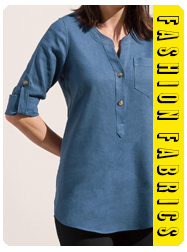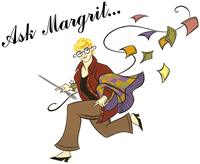What's New!
Quilting Questions Answered
The e-Forum column is dedicated to you, the quilter. I would like to encourage you to participate in the e-Forum by submitting any events, thoughts, questions and hints to “Ask Margrit” and submitting your information via e-mail. If you submit information regarding quilting events in your area, we will post as many as possible. Please submit at least 2 months prior to the event.
In this February edition of Ask Margrit:
For this first question, I would like to also pose it to the readers of Ask Margrit. It is an intriguing question, and I have offered one possible solution. I would also like to get your suggestions as to how you might solve the problem. E-mail me your ideas and I will pass them along.
Q: My question is about how to 'rescue' log cabin blocks! A few years ago when I was a novice quilter I started to make a Christmas wall hanging, but half way through making the blocks my machine's cam was damaged resulting in two slightly different sized blocks and the hanging is proving very difficult to assemble.
I know now that I should have measured each and every block as I went along but I would love to finish this project as I bought the materials in Germany before I left, and it will be a lovely reminder each year of our time spent there. I have been so tempted on several occasions to 'bin' it, but each time I have resisted. If you can offer any advice I would be very grateful.
A: Several of us talked about solutions to your problem. You might try making the blocks larger by adding a small border around each block and then trimming them to the same size. To make it look like a design choice, you can use two different fabrics and after trimming layout the blocks (refer to a book on log cabin layouts for design possibilities if needed) Alternating the two different block border options in the layout.
Q: My Mother would like to know what techniques you might recommend to smooth out batting or remove the creases in batting. She gets donations from her church (the batting happened to be one of them) that she uses to create marvelous blankets and comforters for the parishioners.
A: Since you didn't say, I'm assuming that the batting is polyester. The best way to handle the batting is to unfold and smooth it out over the floor or large flat area. Smooth the wrinkles with your hand and let the batting sit and relax overnight. The polyester should relax and release the wrinkles. If this doesn't work you can try misting it by spraying it with a little water (do not over wet it) and then letting it dry. Continue to lightly pull it and smooth it with your hand. This should take care of it.
Q: What is a fussy cut? I think it is where you take a piece of material that has a printed pattern and use the center of it in a block. Am I right?
A: Fussy cutting is cutting a specific design out of a fabric. It can be used in the center of a block, but it can also be used any place within a block. Pieces are also fussy cut to make kaleidoscope and stack and whack style quilts.
Q: I'm making a quilt and the directions are not that great. The center square is a pinwheel made out of 1/2 square triangles. The directions say to cut blocks 2 and 7/8 inch square to make your 1/2 sq. triangles… After cutting them apart and making your pinwheel… how big should the finished pinwheel be? I prefer to make a slightly larger block and trim down. But if my calculations are wrong it'll throw the rest of the quilt off.
A: After you make the 1/2 square triangle it should measure 2 1/2" before you sew it into a block. The finished measurement, after it is sewn into the block, will be 2". I usually cut my squares 1 1/8" larger than the finished size. So if it finishes 2", I would cut 3 1/8" squares. After sewing and cutting apart, I then trim the squares down to measure 2 1/2". That way you have a perfect square when you sew the blocks together.
The formula for making 1/2 square triangles is to add 7/8" to the finished size of the square, but I always add 1 1/8" and then trim down. You will trim the 1/2 triangle to the finished size plus 1/2" for seam allowance.
Also check the Ask Margrit archive files for half square and quarter square triangles.
Q: I put together a small sample of 6 squares in preparation for a rag quilt. I just used some scrap fabric that I had. I washed the piece and some of the fabric didn't fray. How come? I wondered if it was because there may be polyester in one of the pieces I cut squares from. Should I always use all cotton fabric? Also how does a rag quilt made out of fleece look?
A: I'm sure the reason that the fabric didn't fray is because it is not Cotton. Cotton or cotton flannel works the best for a rag quilt. I haven't tried using fleece, before you do, I would try a sample by sewing a few squares together and then washing them to check the results.
Q: I have a grace frame. It is designed to hold a queen sized quilt. I have made a king sized quilt to which I have not yet added the border. It will fit on the frame as it now without the border. Can I somehow add the border and just bunch or fold it up to fit the frame for the main quilting? Do you have any suggestions?
A: Several years ago when I hand quilted all of my quilts, I would occasionally have the same problem. I would fold one of the sides over the top of the quilt (only fold once or it gets to bulky); quilt the rest of the top, then fold the opposite side (that has already been quilted), replace the quilt on the frame and quilt the unquilted portion of the quilt.
Q: My grandmother died a few years ago and left behind 12 quilt squares with cross-stitched flowers. I would like to use those squares and finish the quilt she started. I should say that I have never quilted before so this might seem like a stupid question. Each of the 12 squares has blue markings on it from the design that my grandmother used. I am assuming these marks will wash away leaving just the cross-stitch. My question is should I leave them as they are while constructing the rest of the quilt until I have a finished product or should the markings be removed before that? I do not want to do anything with the squares until I know for sure since I do not want to ruin them.
A: She probably used the water soluble marker. You want to remove it before you make the quilt. Once the quilt is completed, if you don't totally submerge the quilt in water the marker will soak into the batting and will continue to come to the surface of the quilt. I suggest that you spray the individual blocks with water until the marker completely disappears and then lay the blocks out on a towel to dry. Carefully, spray one block to make sure the embroidery thread is colorfast.


 All Fabrics
All Fabrics Precuts
Precuts Patterns
Patterns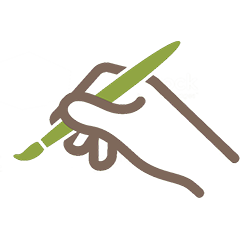 Designers
Designers Manufacturers
Manufacturers Where to Buy
Where to Buy Customers Only
Customers Only New customers
New customers
